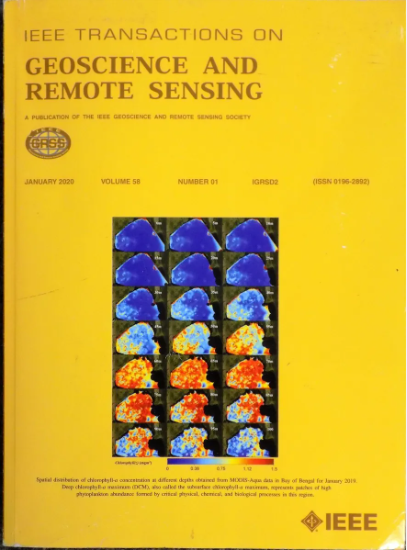A Novel Scheme for Range Ambiguity Suppression of Spaceborne SAR Based on Underdetermined Blind Source Separation
IF 7.5
1区 地球科学
Q1 ENGINEERING, ELECTRICAL & ELECTRONIC
IEEE Transactions on Geoscience and Remote Sensing
Pub Date : 2025-04-01
DOI:10.1109/TGRS.2025.3556296
引用次数: 0
Abstract
Range ambiguity is a critical factor degrading the high-resolution and wide-swath (HRWS) imaging performance of spaceborne synthetic aperture radar (SAR), arising primarily from the antenna sidelobe characteristics. Recently, blind source separation (BSS) methods have shown promise in mitigating range ambiguity. However, existing studies have mainly focused on the determined scenario. In contrast, underdetermined cases are often more prevalent in practical settings. To address this gap, this article proposes a novel range ambiguity suppression scheme specifically designed for the underdetermined BSS (UBSS) scenario. Point and distributed targets simulation based on Sentinel-1 system is conducted to verify its effectiveness. The results indicate that for the point target imaging performance of two channels, peak sidelobe ratio (PSLR) and integrated sidelobe ratio (ISLR) are improved by an average of 6.62 and 9.47 dB, respectively. In the distributed target case, the separation and recovery of the echo signals in the target region achieve an average similarity (pixel, structure, and cosine metrics) exceeding 94.27%, and demonstrate robustness at signal-to-noise ratios above 25 dB. These findings provide insight into the feasibility of UBSS-based strategies for range ambiguity suppression and offer valuable reference points for future investigations involving single-channel implementations.基于欠确定盲源分离的空基合成孔径雷达范围模糊抑制新方案
本文章由计算机程序翻译,如有差异,请以英文原文为准。
求助全文
约1分钟内获得全文
求助全文
来源期刊

IEEE Transactions on Geoscience and Remote Sensing
工程技术-地球化学与地球物理
CiteScore
11.50
自引率
28.00%
发文量
1912
审稿时长
4.0 months
期刊介绍:
IEEE Transactions on Geoscience and Remote Sensing (TGRS) is a monthly publication that focuses on the theory, concepts, and techniques of science and engineering as applied to sensing the land, oceans, atmosphere, and space; and the processing, interpretation, and dissemination of this information.
 求助内容:
求助内容: 应助结果提醒方式:
应助结果提醒方式:


